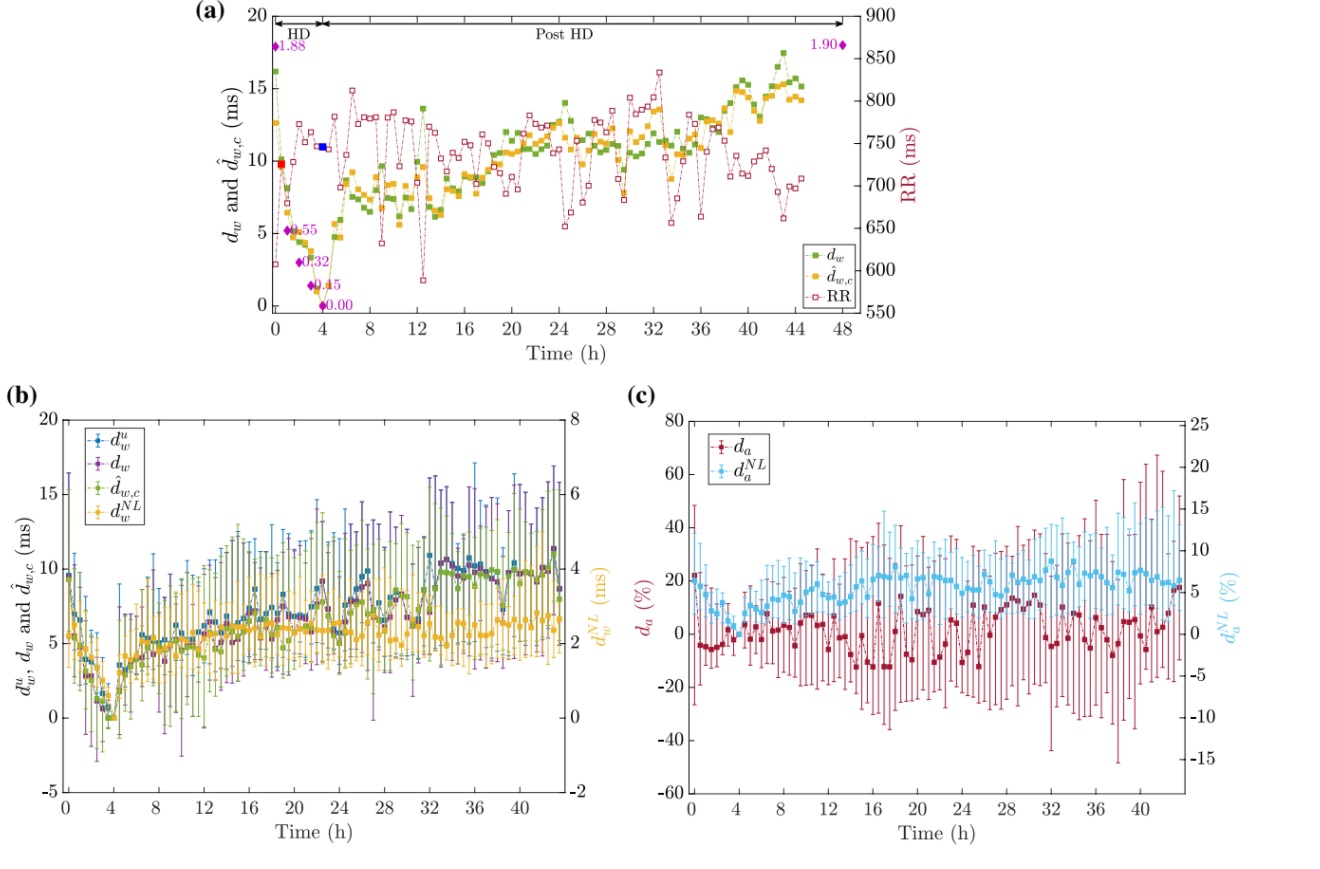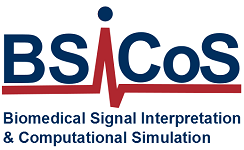-
News
Monitoring Blood Potassium Concentration in Hemodialysis Patients by Quantifying T-wave Morphology Dynamics
25 Feb, 2021
We investigated the ability of time-warping-based ECG-derived markers of T-wave morphology changes in time (dw) and amplitude (da), as well as their non-linear components (dNLw and dNLa), and the heart rate corrected counterpart (dw,c), to monitor potassium concentration ([K+]) changes (Δ[K+]) in end-stage renal disease (ESRD) patients undergoing hemodialysis (HD).
We compared the performance of the proposed time-warping markers, together with other previously proposed [K+] markers, such as T-wave width (Tw) and T-wave slope-to-amplitude ratio (TS/A), when computed from standard ECG leads as well as from principal component analysis (PCA)-based leads. 48-hour ECG recordings and a set of hourly-collected blood samples from 29 ESRD-HD patients were acquired. Values of dw, da, dNLw , dNLa and dw,c were calculated by comparing the morphology of the mean warped T-waves (MWTWs) derived at each hour along the HD with that from a reference MWTW, measured at the end of the HD. From the same MWTWs Tw and TS/A were also extracted. Similarly, Δ[K+] was calculated as the difference between the [K+] values at each hour and the [K+] reference level at the end of the HD session.
We found that dw and dw,c showed higher correlation coefficients with Δ[K+] than TS/A—Spearman’s (ρ) and Pearson’s (r)—and Tw—Spearman’s (ρ)—in both SL and PCA approaches being the intra-patient median ρ ≥ 0.82 and r ≥ 0.87 in SL and ρ ≥ 0.82 and r ≥ 0.89 in PCA respectively.
Our findings would point at dw and dw,c as the most suitable surrogate of Δ[K+], suggesting that they could be potentially useful for non-invasive monitoring of ESRD-HD patients in hospital, as well as in ambulatory settings. Therefore, the tracking of T-wave morphology variations by means of time-warping analysis could improve continuous and remote [K+] monitoring of ESRD-HD patients and fagging risk of [K+]-related cardiovascular events.
F. Palmieri, P. Gomis, D. Ferreira, J. E. Ruiz, B. Bergasa, A. Martín-Yebra, H. A. Bukhari, E. Pueyo, J. P. Martínez, J. Ramírez, and P. Laguna (2021)
DOI: 10.1038/s41598-021-82935-5

